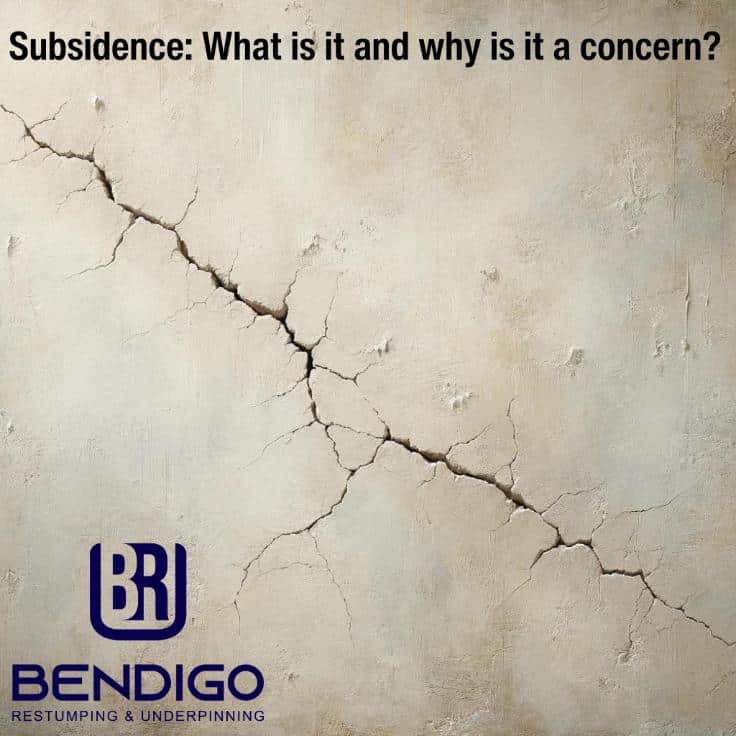Subsidence is a quiet but persistent problem increasingly affecting properties. This stealthy threat can imperceptibly weaken a building’s foundation, resulting in expensive foundation repairs work if overlooked.
By recognising its early indicators and understanding its causes, we can anticipate and thwart the potentially destructive effects of subsidence, safeguarding our homes and investments.
In this post, we’ll talk more about subsidence, why it’s a concern, and its top 6 causes.
What is Subsidence?
Subsidence is the gradual sinking or lowering of the ground’s surface, often leading to structural damage in buildings. This phenomenon can be caused by a variety of factors, including soil compaction, erosion, or the removal of underground water.
Subsidence is particularly problematic in areas with clay-rich soils, which shrink and expand with moisture changes. It can result in cracks in walls, uneven floors, and misaligned doors and windows, all of which require significant repair efforts to ensure the stability of affected structures.

Why is Subsidence a Concern?
Subsidence is a concern because it can lead to structural damage, such as a sinking house, and decrease property value.
When the ground beneath a building sinks unevenly, it can cause cracks in walls, floors, and foundations, leading to costly repairs. Additionally, subsidence can disrupt underground utilities and roads, creating safety hazards.
In severe cases, it may even render a property uninhabitable. The risk of subsidence is particularly high in areas with unstable soil, excessive groundwater extraction, or near mining activities.
What are the Top 6 Causes of Subsidence?
The top 6 causes of subsidence are underground excavations, tree roots, water leaks, poor compaction, erosion, and soil shrinkage.
Underground Excavations
Subsidence can be caused by human activity through excavations such as mining, tunnelling, or the creation of underground structures. These actions can remove support from the soil layers above, leading to their collapse and the gradual sinking of the ground surface above.
Tree Roots
Large trees near buildings can cause subsidence. Their roots may extend far beneath the foundations, extracting significant amounts of water from the soil. This can lead to soil shrinkage, particularly in clay-rich soils, resulting in ground movement and potential damage to foundations.
Water Leaks
Leaks from broken pipes or drainage systems can lead to subsidence. Excess water softens or washes away the soil, compromising its ability to support the weight of structures above. This is especially problematic in sandy or loosely packed soils.
Poor Soil Compaction
If the soil beneath a structure wasn’t properly compacted during construction, it might settle unevenly over time, leading to subsidence. This is often seen in newer buildings where the ground was not adequately prepared before construction.
Soil Erosion
Natural or human-induced soil erosion can remove the layers of soil that support a building’s foundations. Factors like flowing water, wind, or human activities can accelerate this process, gradually sinking the ground and the structures it supports.
Soil Shrinkage
This occurs in areas with clay-rich soils, which tend to expand when wet and shrink when dry. Fluctuations in moisture levels, often due to seasonal changes or drought, can cause these soils to contract, leading to subsidence issues.
Are Certain Areas More Prone to Subsidence?
Yes, certain areas are more prone to subsidence. This is primarily due to variations in the soil and local environmental factors. For instance, areas with clay-rich soils are particularly susceptible.

